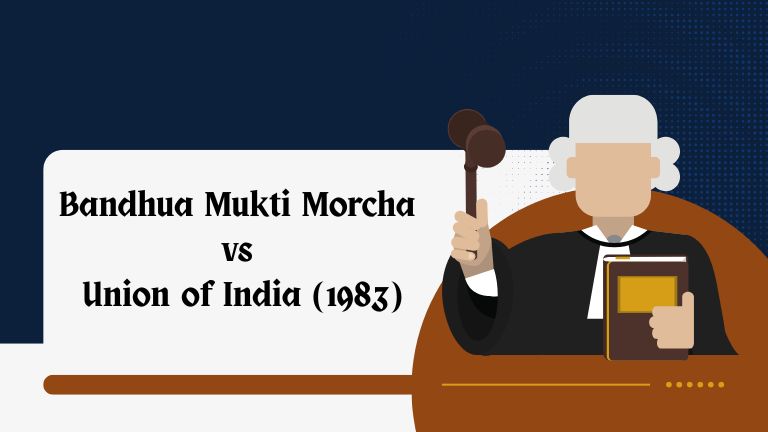
Case Summary: Bandhua Mukti Morcha vs Union of India (1983)
Court: Supreme Court of India
Case No: Writ Petition No. 2135 of 1982
Date of Decision: 16-12-1983
Bench: Full Bench
Hon'ble Judges: R.S. Pathak, J; P.N. Bhagwati, J; A.N. Sen, J
Final Decision: Allowed
Citations: AIR 1984 SC 802; (1984) LabIC 560; (1983) 2 SCALE 1151; (1984) 3 SCC 161; (1984) 2 SCR 67; (1984) 16 UJ 29
[Judgment Source] https://www.courtkutchehry.com/Judgement/Search/AdvancedV2?docid=280488
Facts of the Case
The petitioner, Bandhua Mukti Morcha, an organization dedicated to the release of bonded labourers, filed a writ petition under Article 32 of the Constitution. The petition sought immediate eradication of bonded labour, a practice deeply rooted in exploitation and violation of human dignity, prevalent across various states despite constitutional prohibition under Article 23 and enactment of the Bonded Labour System (Abolition) Act, 1976.
Law Points Raised
1. Whether the existence of bonded labour violates Articles 21, 23, and Directive Principles of State Policy.
2. Scope of the State’s obligation under the Bonded Labour System (Abolition) Act, 1976.
3. Whether forced labour without bonded debt qualifies as 'bonded labour' for rehabilitation purposes.
Acts / Provisions / Articles Referred
• Constitution of India: Articles 21, 23, 32, 39, 41, 42, 226, 256
• Bonded Labour System (Abolition) Act, 1976: Sections 10-14
• Civil Procedure Code, 1908: Order 46 Rule 6
• Mines Act, 1952: Sections 7-9, 19-21, 44-45, Rules 40-45A
• Contract Labour (Regulation and Abolition) Act, 1970: Sections 2(1), 16-20
Judgements Referred
References made to prior Supreme Court interventions in bonded labour rehabilitation cases, including initiatives in Andhra Pradesh (Ranga Reddy District cases).
Obiter Dicta
The Court criticized the reluctance of some State Governments to acknowledge bonded labour, stating that denial of its existence is more disgraceful than its existence. It emphasized that eradication of bonded labour is a constitutional imperative and a humanitarian obligation.
Ratio Decidendi
Bonded labour, whether arising from a bonded debt or other coercive conditions, violates Articles 21 and 23. The State is constitutionally obligated to identify, release, and rehabilitate such labourers.
Final Ruling
The petition was allowed. The Court directed State Governments to admit the existence of bonded labour wherever applicable, ensure prompt identification, release, and rehabilitation, and fulfill constitutional and statutory duties.
Relevant Paragraph Numbers
Paras 1-5: Discussion on social evil of bonded labour, constitutional mandate, and State obligations.
Summary
This landmark judgment reinforced the constitutional prohibition on bonded labour and expanded the State’s responsibility beyond narrow statutory definitions. It stands as a pivotal authority on the scope of Article 23 and the State’s duty to protect the dignity and freedom of vulnerable sections of society.
[Judgment Source] https://www.courtkutchehry.com/Judgement/Search/AdvancedV2?docid=280488